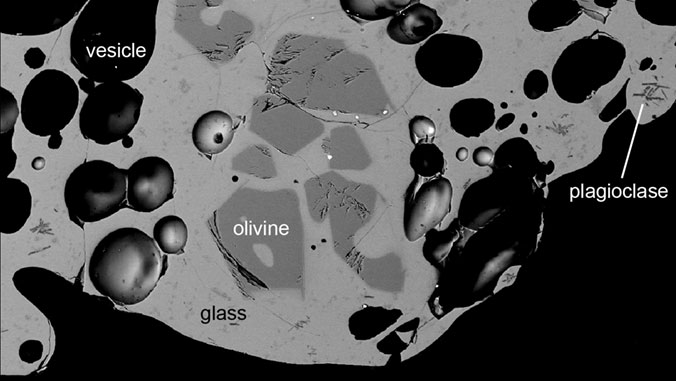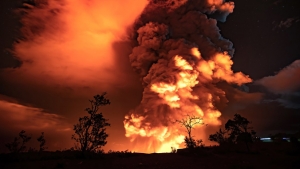
A rapid-response effort to analyze samples of Kīlauea lava commenced shortly after the most recent eruption began within the summit of Kīlauea Volcano on Hawaiʻi Island on December 20. Insights from such freshly erupted volcanic materials offer clues about the processes deep within the volcano that influence its eruptive behavior.
Julia Hammer and Thomas Shea, Earth sciences professors at the University of Hawaiʻi at Mānoa School of Ocean and Earth Science and Technology (SOEST) led the initiative to analyze samples of Kīlauea lava in the Electron Microprobe (EMP) Laboratory.
- More research on the Kīlauea Volcano eruption: Vog team busy with new Kīlauea eruption, January 5, 2021
In coordination with the U.S. Geological Survey’s Hawaiian Volcano Observatory (HVO) and UH Hilo, the EMP Lab team, including graduate student Adrien Mourey, received five samples with glassy particles ejected from the summit crater during lava fountaining on December 20 and 21.

Using advanced analytical techniques and expertise, the team determined the textures and the chemical compositions of glassy ash particles, crystals and Pele’s hair in an effort to better understand the start of the recent eruption.
“The chemical and physical characteristics of the lava are important for evaluating whether magma recently arrived from depth, that is from Earth’s mantle, or was stored inside the volcano since the last eruption in 2018,” said Hammer. “This information, combined with geophysical measurements, geological mapping, gas monitoring and data from other sensors, helps scientists track the current activity and understand its place in Kīlauea’s overall pattern of recent eruptions.”
The lava samples were collected from trays and buckets set at the edge of Halemaʻumaʻu crater by HVO geologists for that purpose. Once they arrived at UH Mānoa, the delicate samples were mounted in epoxy, polished to a mirror-smooth finish, and analyzed with the EMP over two days.
Hammer and Shea were able to provide information to HVO and UH Hilo scientists within about a week after the magma erupted.
This research is an example of UH Mānoa’s goal of Excellence in Research: Advancing the Research and Creative Work Enterprise (PDF), one of four goals identified in the 2015–25 Strategic Plan (PDF), updated in December 2020.
For more information see SOEST’s website.

